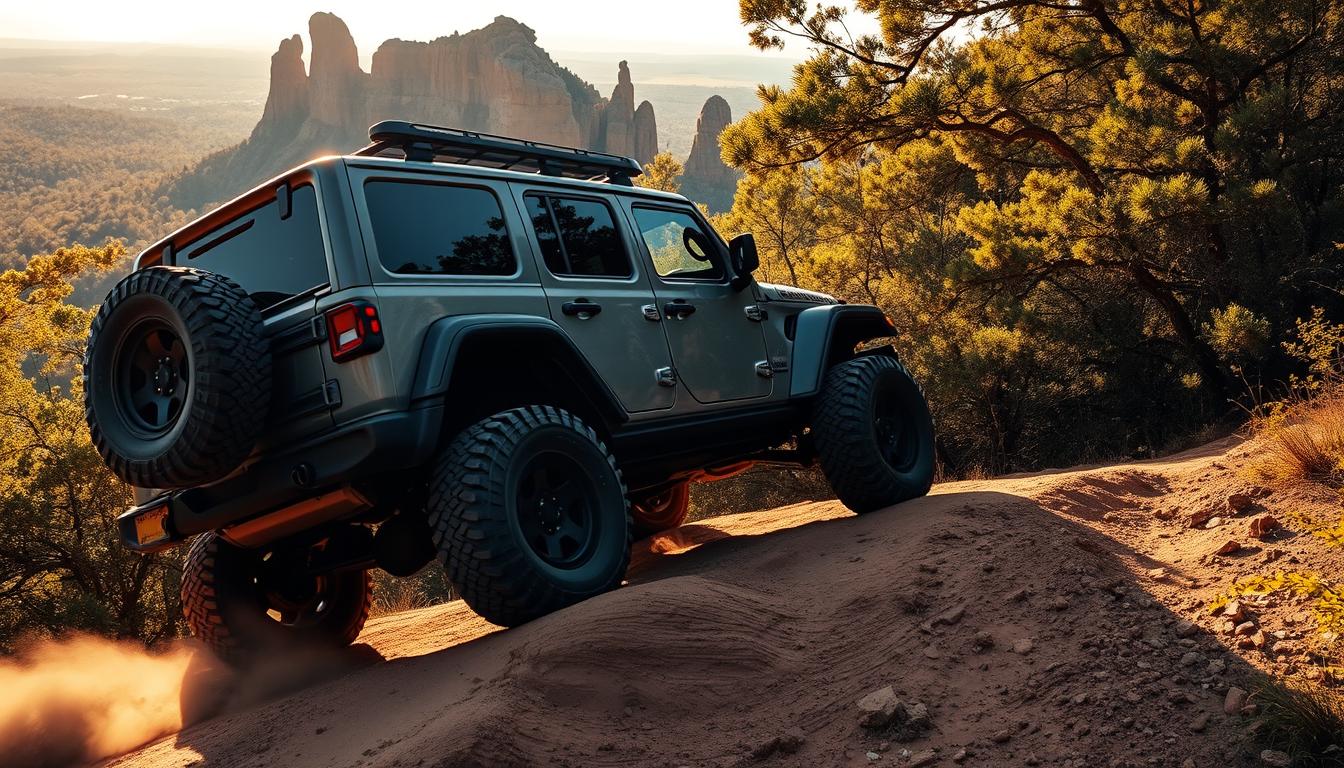Off-Roading Tips for Beginners
Did you know that over 50 million Americans participate in some form of off-pavement driving each year? That’s a massive community exploring the vast network of trails right outside our cities.
If you’re feeling the pull to join them but aren’t sure where to begin, you’re in the right place. This type of driving takes you on unpaved paths through forests, across deserts, and over rocky terrain. It offers an experience that regular road travel simply can’t match.
This guide is designed to cut through the confusion. We’ll provide the essential information you need to get started safely. You’ll learn about choosing the right vehicle, basic gear, and fundamental techniques.
The best way to begin is with knowledge. The off-roading community is famously welcoming and eager to help newcomers build confidence. Let’s turn that overwhelming feeling into excitement for your first adventure.
Key Takeaways
- Off-roading is a popular activity with a huge and supportive community.
- It involves driving on unpaved surfaces like dirt trails, rocks, and sand.
- Starting with the right knowledge is key to safety and enjoyment.
- Your current vehicle might be capable of more than you think.
- This guide will cover essential gear, techniques, and how to find trails.
- You can start simple and build your skills over time.
- There’s a style of off-roading to match every interest, from scenic to challenging.
Introduction to the Off-Roading World
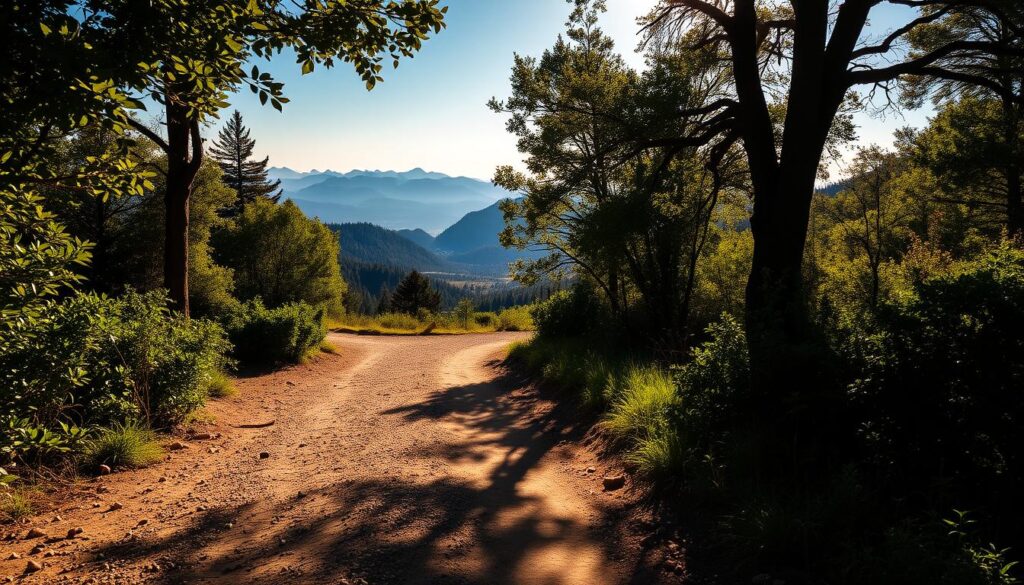
There’s a whole world of adventure waiting just beyond the edge of the paved road. This activity takes you on journeys through landscapes that most people never get to see. It’s about exploring nature up close and personal.
Understanding Off-Roading and Its Appeal
At its core, this driving style involves navigating unpaved surfaces. You’ll encounter everything from smooth dirt paths to challenging rocky terrain. The variety of conditions keeps each trip unique and exciting.
The appeal is undeniable. You gain access to remote areas with breathtaking views. There’s genuine satisfaction in conquering difficult terrain that regular vehicles can’t handle.
Why Beginners Should Explore Off-Roading
Many newcomers worry this hobby might be too technical. However, with proper preparation, it’s accessible to everyone. You don’t need a lot of experience to enjoy easier trails.
The community is famously welcoming to beginners. You’ll find plenty of support as you develop your skills. Starting with simple routes lets you build confidence gradually while having amazing experiences.
Essential Off-Road Equipment and Vehicle Preparation
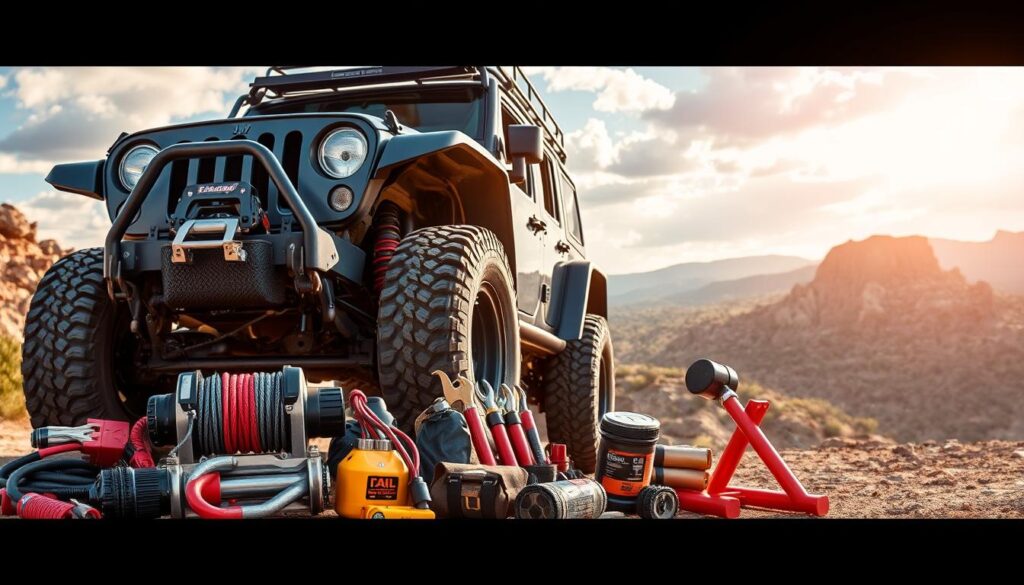
Having the correct gear is your first line of defense against unexpected challenges on the trail. Proper preparation ensures both safety and enjoyment during your adventures.
Core Gear and Safety Equipment
Start with the right tires for your vehicle. Off-road tires have larger diameters than street ones. Your wheel size should equal half the total tire height.
Recovery equipment is crucial. A basic kit includes shackles and a stretchable snatch strap. For tougher situations, consider a winch system.
Don’t forget emergency supplies. Pack a fire extinguisher, first-aid kit, and plenty of food and water. Canned products work well for multi-day trips.
Modifications and Upgrades for Better Performance
Many stock vehicles can handle light trails. But upgrades improve capability. Consider reinforced bumpers that withstand impacts.
Enhanced suspension systems handle rough terrain better. Additional lights provide better visibility. A portable air compressor adjusts tire pressure for different conditions.
Remember to pack a lot of essentials. This preparation makes your journey safer and more enjoyable.
Safety Guidelines and Driving Best Practices
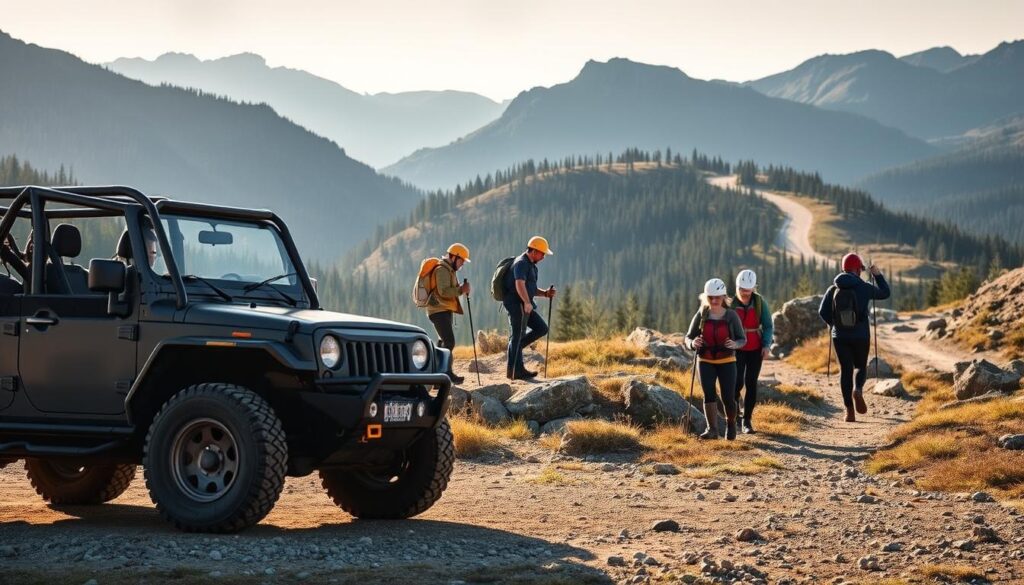
The difference between a memorable journey and a dangerous situation often comes down to following basic safety protocols. While accidents can happen, proper preparation significantly reduces risks. The Consumer Product Safety Commission reports serious ATV-related incidents annually, highlighting why safety must come first.
Pre-Trip Checks and Recovery Tools
Before hitting any trail, conduct thorough vehicle inspections. Check fluid levels, tire pressure, and ensure all equipment functions properly. Always verify your recovery gear is accessible and in working order.
Digital maps outperform paper versions that can get wet or outdated. Download offline maps before leaving cell service. This preparation saves precious time if you get stuck in remote areas.
Essential On-Trail Safety Measures
Never travel alone, especially as a newcomer. Having other people along provides crucial help if you get stuck with mechanical issues. They can also assist with navigation and emergency support.
Pack extra water, food, and supplies for unexpected delays. Carry personal medical information in case first responders need it. Always wear seatbelts and ensure your fire extinguisher remains within reach.
Smart planning means considering what could go wrong. Choose trails matching your skill level and always prioritize safety over thrill-seeking. Proper preparation makes all the difference.
Off-Roading Techniques and Adapting to Different Terrains
Mastering different terrain types separates casual drivers from skilled adventurers. Each surface requires specific techniques for safe navigation. Your success depends on understanding how your vehicle interacts with various ground conditions.
Techniques for Navigating Rock, Mud, and Sand
When facing rocky terrain, slow and steady wins the race. Use low gear and crawl over obstacles carefully. Proper suspension helps absorb impacts from jagged rocks.
Mudding demands consistent momentum and throttle control. Aggressive tire treads provide better grip in slippery conditions. Avoid sudden stops that could leave you stuck.
Sand driving requires reduced tire pressure for improved flotation. Maintain steady speed to prevent getting bogged down. Dune navigation needs careful angle approaches to avoid rollovers.
Water fording is particularly dangerous. Always check depth before crossing streams. Keep your engine above water level to prevent stalling.
Snow driving benefits from traction control systems. These electronic aids help maintain balance on slippery surfaces. They prevent excessive tire wear while improving control.
Adjusting Driving Strategies for Variable Conditions
Tire pressure adjustments make a huge difference. Lower pressure helps tires contour around obstacles like rocks. Higher pressure works better on hard-packed dirt roads.
Always assess changing weather conditions. Rain can quickly turn easy trails into challenging mud pits. Know when conditions become too dangerous to continue.
Your driving strategy should evolve with the terrain. What works on rock won’t help in deep sand. Developing this adaptability is key to enjoyable adventures.
Off-Roading Tips for Beginners
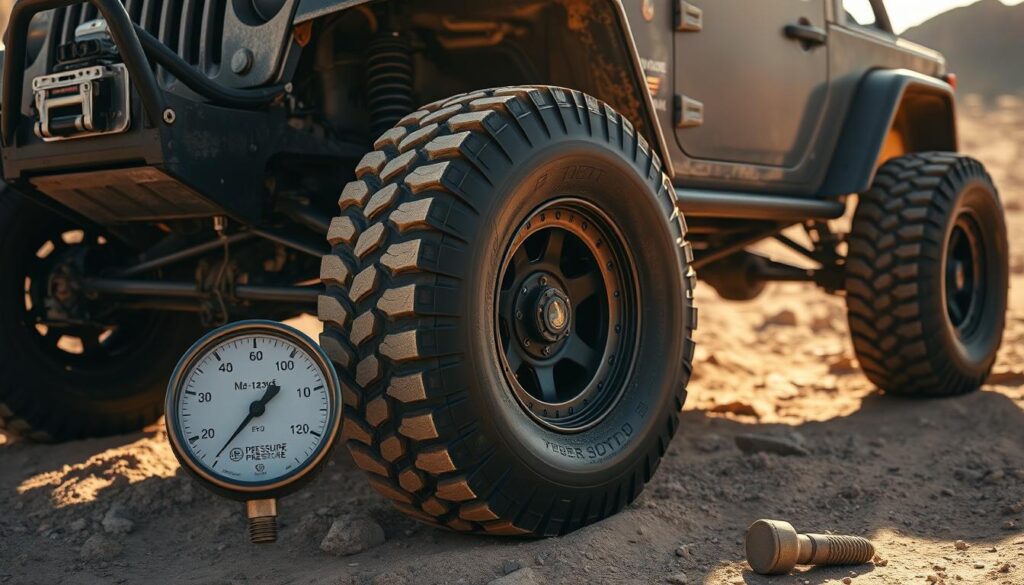
Understanding your equipment’s limitations is the foundation of safe trail exploration. Smart planning prevents most problems before they occur.
Know Your Vehicle’s Capabilities and Limits
Start by learning what your stock vehicle can handle. Most people are surprised by their rig’s capabilities on easier trails.
Your engine power determines what slopes you can conquer. Meanwhile, your tires define your traction and obstacle navigation. Test your setup on simple routes first.
Four-wheel drive systems provide superior control in challenging conditions. Use High range for speeds above 15 mph. Switch to Low range for technical crawling.
Managing Tire Pressure and Recovery Situations
Air down your tires for better grip on rough terrain. Lower pressure helps them contour around obstacles. Increase pressure for smoother surfaces.
Always travel with other people when possible. Having a second vehicle nearby is crucial if you get stuck. This simple precaution saves time and stress.
Stay within your skill level and your rig’s limits. This is the safest way to build confidence while exploring.
Finding and Enjoying Off-Road Trails
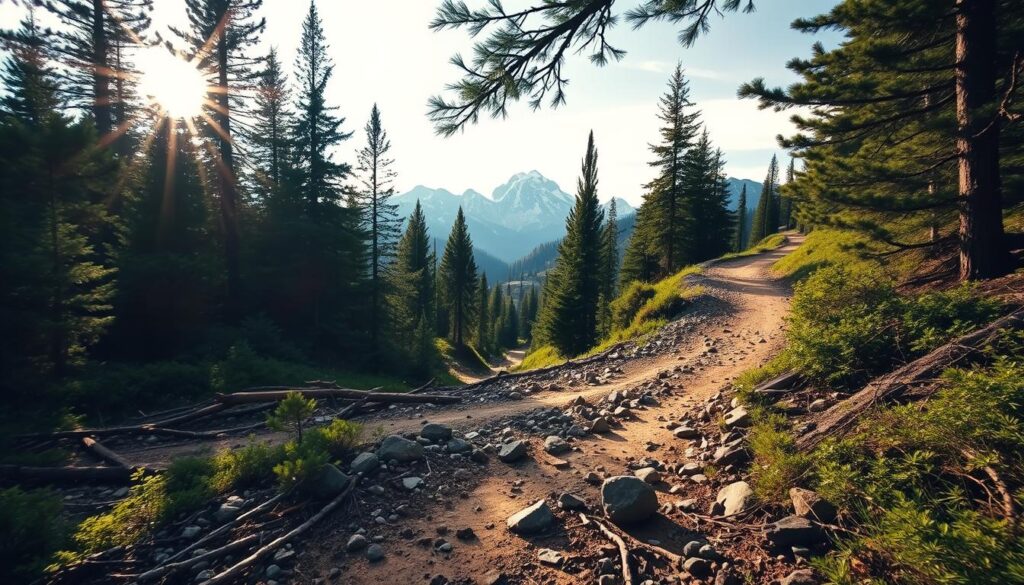
The real joy begins when you discover the perfect path for your adventure vehicle. Choosing routes that match your skill level ensures both safety and enjoyment. Start with easier options like green laning through forests before tackling technical challenges.
How to Choose the Right Trail for Your Skill Level
Consider distance, terrain difficulty, and required equipment when selecting routes. Beginner-friendly trails like cross-country routes offer gradual skill building. More advanced paths feature rocky obstacles or deep mud that demand experience.
Digital mapping tools like onX Offroad provide detailed trail information. You can filter by vehicle type and see current conditions. These apps show difficulty ratings and closure status to help your planning.
Leveraging Local Clubs and Digital Map Tools
Local off-road clubs host training runs for newcomers. Jeep Jamborees and Land Rover Experiences offer guided adventures. These groups provide valuable hands-on learning with experienced people.
Region-specific guide books like “Backcountry Adventures” offer comprehensive trail maps. Public lands managed by the Forest Service and BLM contain numerous legal routes. Always download offline maps before heading into remote areas.
Conclusion
Taking that initial step onto unpaved terrain can transform how you experience the great outdoors forever. This activity offers an incredible way to explore nature and challenge yourself with adventures regular road driving cannot match.
While it may seem intimidating at first, beginners can start safely by choosing appropriate trails and using proper equipment. Remember the most critical tips: always prioritize safety, know your vehicle’s capabilities, and never venture alone.
Proper preparation makes all the difference. Understand how different terrain affects traction and control. Pack adequate food and water, and carry emergency equipment just in case.
Connect with the welcoming community through local clubs and events. Experienced enthusiasts love sharing knowledge and helping newcomers learn. Most people are surprised by what their stock vehicle can accomplish on easier routes.
Following safety guidelines and using common sense dramatically reduces risks. This allows for safe, enjoyable adventures that open up a world of exploration. Get out there and start your journey with confidence!
FAQ
What is the most important piece of gear for a beginner?
Can I go off-roading in a stock vehicle?
How do I adjust my tire pressure for different terrain?
What should I do if my vehicle gets stuck in mud or sand?
How do I find good trails for my skill level?
What emergency supplies should I always carry?
What’s the best way to drive through water obstacles?

Sharon Molly is a content creator in lifestyle, fashion, and travel, delivering style-savvy advice and destination insights to inspire confident living. With a background in digital media, she combines aesthetics with practical guidance for modern women on the go.

